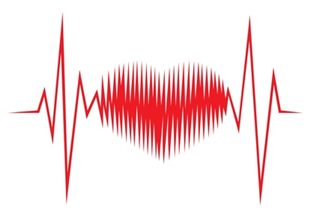 CLINICAL SIGNS:
CLINICAL SIGNS:
* in a young subject, without a cardiovascular history.
* tachycardia attacks at the beginning and end abrupt (sensation of clicks) from a few minutes to several hours.
* the patient feels palpitations, precordialgia and anxiety.
* sometimes lipothymies, functional angina, syncope.
* regular rhythm , frequency to 180-220 / min .
EXAMINATIONS COMPLEMENTAIRESS:
* scope.
* ECG during the crisis if it is possible:
– Fine QRS , frequency at 180-200 / min, P waves are often invisible.
If the P wave is visible, it is negative at D2, D3, VF.
– more difficult diagnosis if functional block and QRS expanded.
* redo an ECG after the crisis to eliminate a WPW .
* TSH.
TREATMENT:
* vagal maneuvers :
– swallowing a glass of ice water.
– Valsalva maneuver: forced expiration carried out closed nose and mouth.
– immersion of the face in very cold water.
– painful ocular compression, except if retinal fragility and ocular hypertension especially in the elderly.
– massage of a single carotid sinus, right then left, for 20 seconds, except for a history of stroke or carotid breath.
* in case of failure:
– venous route: G5%, oxygen therapy in the mask.
– Striadyne :
– ½ to 1 direct IV ampoule (0.5-1 mg / kg IV in children).
– if cardiac pause: cough, if failure: Atropine, 1 mg IV and sternal punch.
– if contraindicated (asthma and COPD in particular):
– Tildiem 25: 0.25 to 0.30 mg / kg IV slow, Digoxin Nativelle: 1 slow IV ampoule (except if WPW), Cordarone: 5 mg / kg in 30 minutes or Isoptine: 5 mg in 5 minutes.
* rebellious forms:
– external electric shock under general anesthesia.
Destruction of the arrhythmogenic zone using radio frequency currents.
